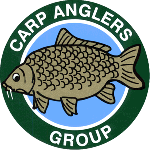
Terminal Tackle
Single hooks can be poorly made, but if you buy quality brands (e.g. Owner SSG, Gamakatsu Octopus, Eagle Claw L84, Partridge, etc.) you won't regret it because they are very sharp and will not break. The best size range is from 10 to 2, depending on what you are trying to achieve with your rigs. Larger hooks only make it harder to catch the fish (as do smaller hooks because they pull out easily) and can scare off big fish.
Most North Americans do very well by putting the bait on the hook, squeeze some split shot on the line, and chuck this setup in the water. But there are better methods. One of the easiest to use is common amongst catfish anglers, the paternoster rig. This is an english term used here because there doesn't seem to be an American description everyone agrees on. The paternoster rig is a heavy weight on the end of the line with dropper lines above the weight. If legal, several hooks can be used. The rig is fished tight line and the multiple hook setup, filled with corn, attracts fish. This is a good beginning rig because it does not involve great expenditure. Later on you can modify the rig to catch finicky fish.
The English system involves using several types of terminal rigs. The simplest is called a running leger and consists of a bass or dipsey weight running free on the line, a swivel to stop the weight at the terminal end, and a hook and leader attached to the swivel. This is also fished with a tight line setup. The main advantage is the fish doesn't feel the weight and if the reel is on free spool, the fish can make a run without knowing it is hooked. At least that is the theory and it seems to work fairly well.
I've just described two simple rigs. In the future I will add descriptions of hair rigs, feeder rigs, bolt rigs, and other magical ways to catch carp.
